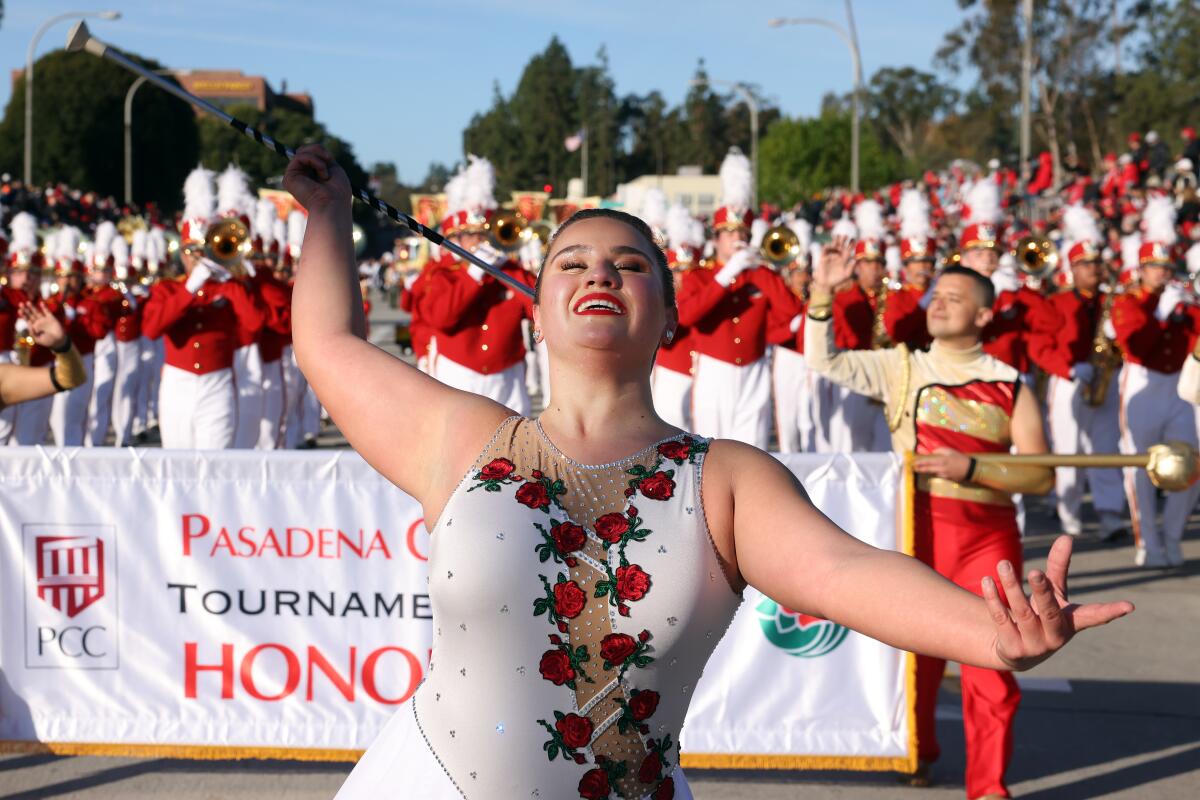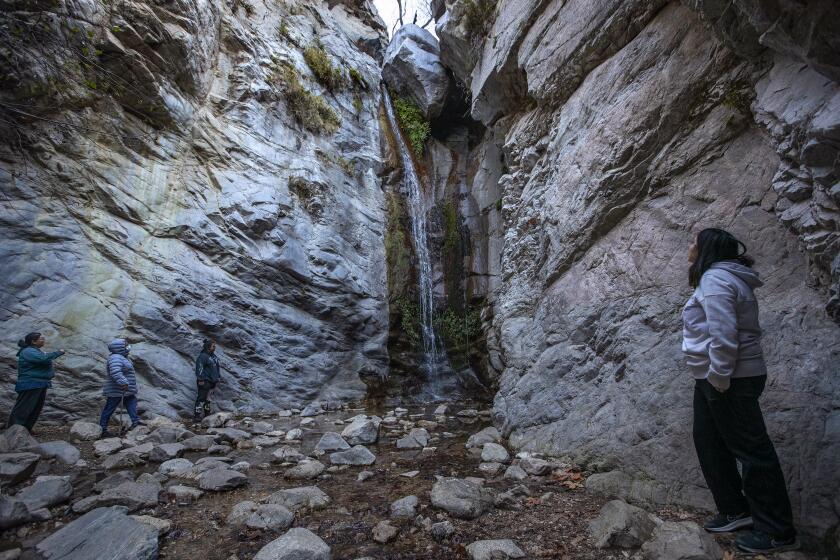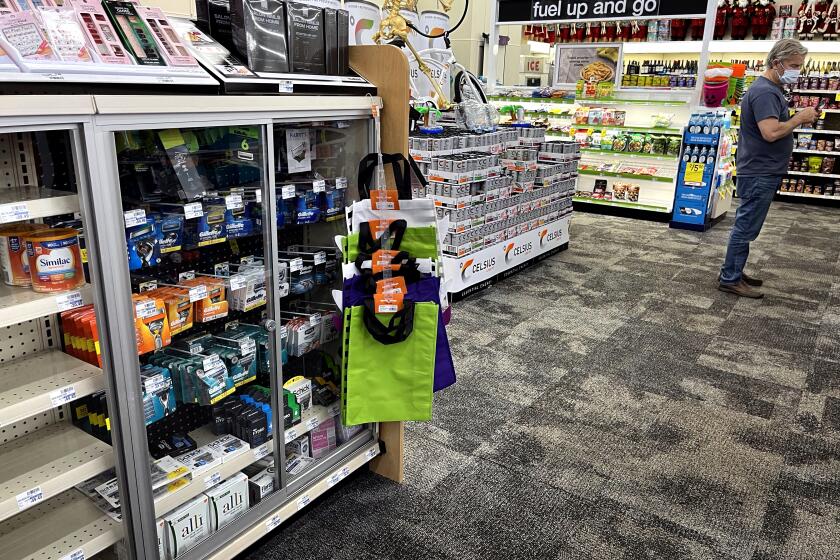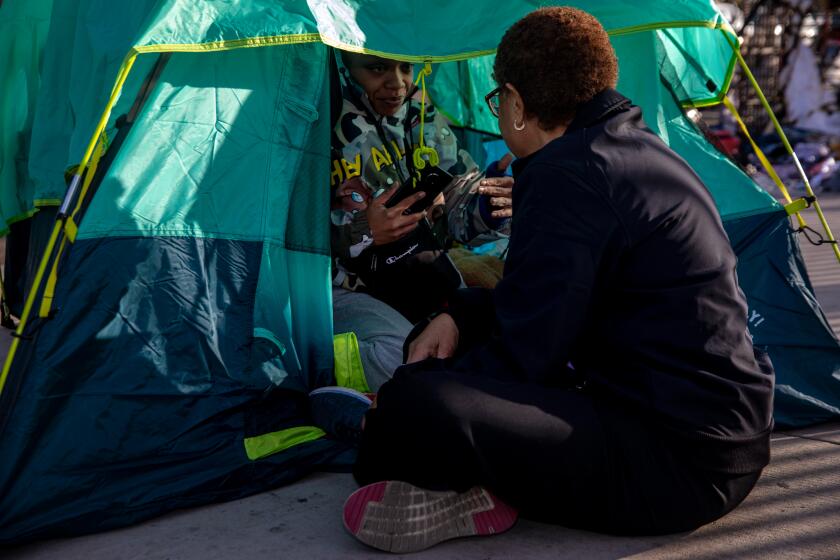Editorial: What does the Rose Parade really show the world about Southern California?

There is no longer-running televised showcase of fabled Southern California weather than the Rose Parade on New Year’s Day in Pasadena. The images of floats carpeted in flowers gliding down the 5½-mile route under a sun-drenched sky with mild, even balmy temperatures on the first day of January have captivated snowbound people elsewhere and even beckoned some to move here.
So just the possibility that rain might fall on the Rose Parade on Monday and sully this tableau has put weather forecasters on high alert and prompted news stories about the incoming weekend storm that might linger into New Year’s Day.
Biden can bypass Congress to protect an additional 1 million acres in California, including in the desert near Joshua Tree and the San Gabriel Mountains. He should do so without delay.
This idyllic vision of Southern California is accurate at least in terms of meteorology — it has rained on the parade only twice in 69 years. The whole point of the Rose Parade, dating to 1890, was to promote Pasadena as a paradise of blooming flowers and trees bearing oranges in the winter. Members of Pasadena’s Valley Hunt Club came up with the idea of a festival of outdoor events — such as chariot racing, jousting, polo and eventually ostrich races — that would become the Tournament of Roses and be preceded by a parade of flower-bedecked carriages and eventually include floats and marching bands.
But Southern California would never be the perfect concoction that the club members dreamed up to promote — except perhaps for themselves and other wealthy transplants from the Midwest and East, some of whom built mansions in Pasadena. The mild Southern California climate could turn deadly on a dime, as it can now. There was plenty of political corruption and crime. And racism was rampant in the region, as it was in much of the country. For example, officials in Pasadena forced its Chinese residents to leave the central portion of the city five years before the parade started.
Lawmakers aren’t letting the lack of useful data on the causes of retail theft stop them from pushing solutions to a problem they can’t define.
Instead of being touted as paradise, now California is assailed as the opposite — a land of unlivable cities such as San Francisco and Los Angeles where crime is rampant, water is scarce, housing is unaffordable (the median price in L.A. is just under $1 million and professionals and business owners are fleeing, fed up with the high cost of living.
Doomsayers have been painting a grim portrait of Los Angeles for decades. Thirty years ago, Time magazine posed the question on its cover: “Is the City of Angels Going to Hell?”
In fact, like the 1890s, Southern California is neither paradise nor hellscape. It’s a place like any other, with a variety of attributes and challenges.
She has moved at an impressively fast pace to get homeless people off the streets and fast-track affordable housing. But there’s still so much more to do.
Yes, there have been a spate of high-profile smash-and-grab robberies, but violent crime is down. Yes, it’s a drought-prone state, but our reservoirs were overfilled this year and we’re getting better about water conservation.
And yes, although plenty of high earners are still here, the drama of income inequality plays out daily between people living in million-dollar houses and people who have no homes other than sidewalks. California has about 181,000 homeless people — the largest number of all the states in the nation — with 75,000 of them in Los Angeles County as of the 2023 count. And, no, homeless people didn’t watch the Rose Parade on TV and decide to come to sunny Southern California to live on the street. According to a recent study, most homeless people were living in the state when they lost their housing.
Even the Rose Parade organizers have embraced some of the real and complicated problems of California. This year, Union Station Homeless Services, a Pasadena-based homeless services agency, has a float titled “Bee the Solution.” Of the eight people who will ride on the float, three are formerly homeless clients of the organization who are now stably housed.
Going from homeless to housed and waving on a Rose Parade float is not a bad counter to that doomsday scenario.
Rain or not, the parade will go on Jan. 1. And the image of Southern California beamed out to the rest of the world will be a staged version of the Golden State, which is neither the Shangri-La that early boosters promised nor the nightmare that some commentators gleefully describe today.
More to Read
A cure for the common opinion
Get thought-provoking perspectives with our weekly newsletter.
You may occasionally receive promotional content from the Los Angeles Times.













